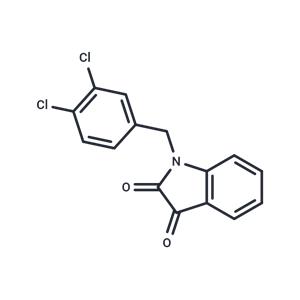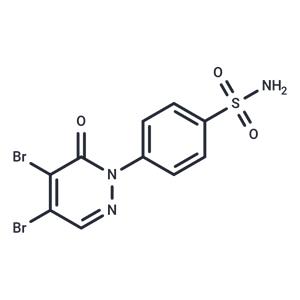
MDK83190 NEW
| Price | $34 | $54 | $160 |
| Package | 5mg | 10mg | 50mg |
| Min. Order: | |
| Supply Ability: | 10g |
| Update Time: | 2024-11-19 |
Product Details
| Product Name: MDK83190 | CAS No.: 79183-19-0 |
| Purity: 98.67% | Supply Ability: 10g |
| Release date: 2024/11/19 |
Product Introduction
Bioactivity
| Name | MDK83190 |
| Description | MDK83190 (Apoptosis Activator 2) is a potent apoptosis activator, induceing caspase-3 activation, PARP cleavage, and DNA fragmentation . |
| Cell Research | All viable cells within the defined field of a microscope reticle grid are counted using a manual mechanical counter by an experimenter blinded to condition. Cells are scored viable on the basis of both positive staining with the vital dye calcein acetoxymethyl ester and the morphological criterion of a smooth, spherical soma. Counts of viable cells are made in four non-overlapping fields per culture well with each condition represented by 3 separate wells. The number of viable cells counts per well for vehicle-treated control conditions ranged from 100-200. All experiments are repeated in at least 3 independent culture preparations. Raw cell count data are statistically analyzed with one-way ANOVA, followed by between group comparisons using the Fisher LSD test (significance indicated by P < 0.05). Cell viability is presented graphically as a percentage of live cells in the vehicle-treated control condition.(Only for Reference) |
| Kinase Assay | Cell-Free Apoptosis Assay: HeLa cell cytoplasmic extracts are prepared according to previously published reports. Apoptosis Activator 2 in DMSO are distributed into 96-well microtiter plates at a final concentration of 1 mM (final DMSO concentration is 1% vol/vol). To each well is added 250 μg of total protein from cytoplasmic extracts in HEB buffer (50 mM Hepes, pH 7.4/50 mM KCl/5 mM EGTA/2 mM MgCl), with 2 mM DTT, 2 μM cyto c, and 0.5 μM DEVD-AFC (Asp-Glu-Val-Asp-7-amino-4-trifluoromethylcoumarin) substrate in a total of 150 μL. Plates are incubated at 37 ℃, and fluorescence is read in a LJL Biosystems plate reader at 10-min intervals. |
| In vitro | Apoptosis Activator 2 (20 μM) at the reduced cyto c concentration increases the fraction of Apaf-1 in the apoptosome by 1.5-fold to 33%. Apoptosis Activator 2 increases the extent of caspase-3 activation at the reduced level of cyto c and caspase-3 activation by 4-fold. Apoptosis Activator 2 strongly indues caspase-3 activation, PARP cleavage, and DNA fragmentation, and finally killing cells with an IC50 of 4 μM. Apoptosis Activator 2 induces apoptosis of PBL, HUVEC, Jurkat, Molt-4, CCRF-CEM, BT-549, MDA-MB-468 and NCI-H23 with of IC50 of 50 μM, 43 μM, 4 μM, 6 μM, 9 μM, 20 μM, 44 μM and 35 μM. Apoptosis Activator 2 exerts a cytostatic effect on the majority of tumor cell lines tested, inhibiting cell growth by 50-100% at 10 μM in 40 of 48 cell lines tested. [1] Apoptosis Activator 2 induces cell death by triggering apoptosome formation. The level of En1 expression does not have a significant influence on the survival rates of Ventral midbrain cultures for Apoptosis Activator 2 (-8.1 ± 6.0%). Survival rate is not significantly altered if the other three reagents are employed (-10.7 ± 4.7%) for Apoptosis Activator 2. [2] Apoptosis activator 2 (10 μM) induces apoptosis in AGS cells as evaluated by apoptotic DNA ladder and Tunel assay. Apoptosis activator 2 (10 μM) enhances the induction of apoptosis by anti TROP2 conjugated liposomes. [3] Cyclohexamide (10 μg/mL) or zVAD (50 μM) significantly protects against Apoptosis Activator 2 toxicity in neuroneal cultures. Apoptosis activator 2 (3 μM) results in numerous neurones with pyknotic nuclei suggestive of cell death involving apoptosis. DHT (10 nM) or E2 (10 nM) significantly protects against Apoptosis Activator 2 toxicity in neuroneal cultures. [4] |
| Storage | Powder: -20°C for 3 years | In solvent: -80°C for 1 year | Shipping with blue ice. |
| Solubility Information | DMSO : 4.5 mg/mL (14.7 mM), Sonication is recommended. Ethanol : 1.5 mg/mL (5 mM) |
| Keywords | Inhibitor | MDK83190 | Apoptosis | MDK-83190 | inhibit | MDK 83190 |
| Inhibitors Related | Stavudine | 5-Fluorouracil | Acetylcysteine | Kaempferol | Myricetin | Sodium 4-phenylbutyrate | L-Ascorbic acid | Dextran sulfate sodium salt (MW 4500-5500) | Metronidazole | Sorafenib | Tributyrin | Lidocaine hydrochloride |
| Related Compound Libraries | Apoptosis Compound Library | Target-Focused Phenotypic Screening Library | Bioactive Compound Library | Anti-Neurodegenerative Disease Compound Library | Autophagy Compound Library | Pyroptosis Compound Library | NO PAINS Compound Library | Bioactive Compounds Library Max | Covalent Inhibitor Library | Anti-Cancer Compound Library |
Company Profile Introduction
Target Molecule Corp. (TargetMol) is a global high-tech enterprise, headquartered in Boston, MA, specializing in chemical and biological research product and service to meet the research needs of global customers.
TargetMol has evolved into one of the biggest global compound library and small molecule suppliers and a customer based on 40+ countries. TargetMol offers over 80 types of compound libraries and a wide range of high-quality research chemicals including inhibitors, activator, natural compounds, peptides, inhibitory antibodies, and novel life-science kits, for laboratory and scientific use. Besides, virtual screening service is also available for customers who would like to conduct the computer-aided drug discovery.
You may like
Recommended supplier
| Product name | Price | Suppliers | Update time | |
|---|---|---|---|---|
| $5.00/5KG |
VIP7Y
|
Career Henan Chemical Co
|
2019-09-03 |
- Since: 2011-01-07
- Address: 36?Washington?Street, Wellesley?Hills
INQUIRY







 United States
United States